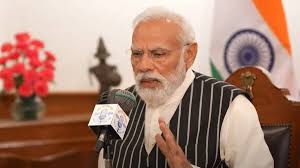
In his first Mann Ki Baat address following Operation Sindoor, Prime Minister Narendra Modi on Sunday shared visuals of the terror camps in Pakistan and Pakistan-occupied Kashmir (PoK) that were destroyed by Indian armed forces. The operation was launched in retaliation to the deadly April 22 terror attack in Pahalgam, Jammu and Kashmir, which claimed 26 lives.
PM Modi praised the precision and impact of the strikes carried out by India on May 7, targeting terror camps operated by Lashkar-e-Taiba (LeT), Jaish-e-Mohammad (JeM), and Hizbul Mujahideen. The Prime Minister described Operation Sindoor as a turning point in the global war against terrorism, showcasing India’s evolving defence strategy and determination.
“Operation Sindoor is the picture of our resolve, courage, and a changing India,” PM Modi said, adding that the mission was a testament to India’s growing military strength and self-reliance under the Aatmanirbhar Bharat initiative.
Key Highlights of Operation Sindoor:
- Timing and Scale: The operation was conducted between 1:05 AM and 1:30 AM on May 7, during which Indian forces struck nine terror targets.
- Targeted Sites in PoK:
- Gulpur Camp (Kotli) – Base for LeT operatives active in Rajouri and Poonch.
- Abbas Camp (Kotli) – Known for training suicide bombers of LeT.
- Barnala Camp (Bhimber) – Used for weapons handling, IED training, and jungle warfare.
- Targets in Pakistan:
- Markaz Subhan (Bahawalpur) – Headquarters of Jaish-e-Mohammad, used for recruitment and training.
- Markaz Taiba (Muridke) – Lashkar-e-Taiba’s central hub, linked to multiple attacks including the 2008 Mumbai attacks.
- Other Camps – Sarjal and Mehmoona Joya camps in Sialkot; Syedna Belal and Sawai Nala camps in Muzaffarabad.
Following the Indian strikes, Pakistan launched a counterattack with drones and missiles, all of which were successfully intercepted or neutralized.
PM Modi credited India’s defence capabilities for the operation’s success and called it a reflection of a united India that is no longer willing to tolerate terrorism. “The entire country is united, filled with anger and determination against terrorism,” he declared.
The PM also emphasized that the mission was not a one-off action but part of a larger, ongoing shift in India’s defence and foreign policy posture. “This is the ultimate bravery of our soldiers, backed by the power of weapons, equipment, and technology made in India,” he added.
Operation Sindoor, named after the red vermilion that symbolizes commitment in Indian culture, is being hailed as a milestone in India’s counter-terror strategy and a strong message to those who threaten its sovereignty.
Sources By Agencies




